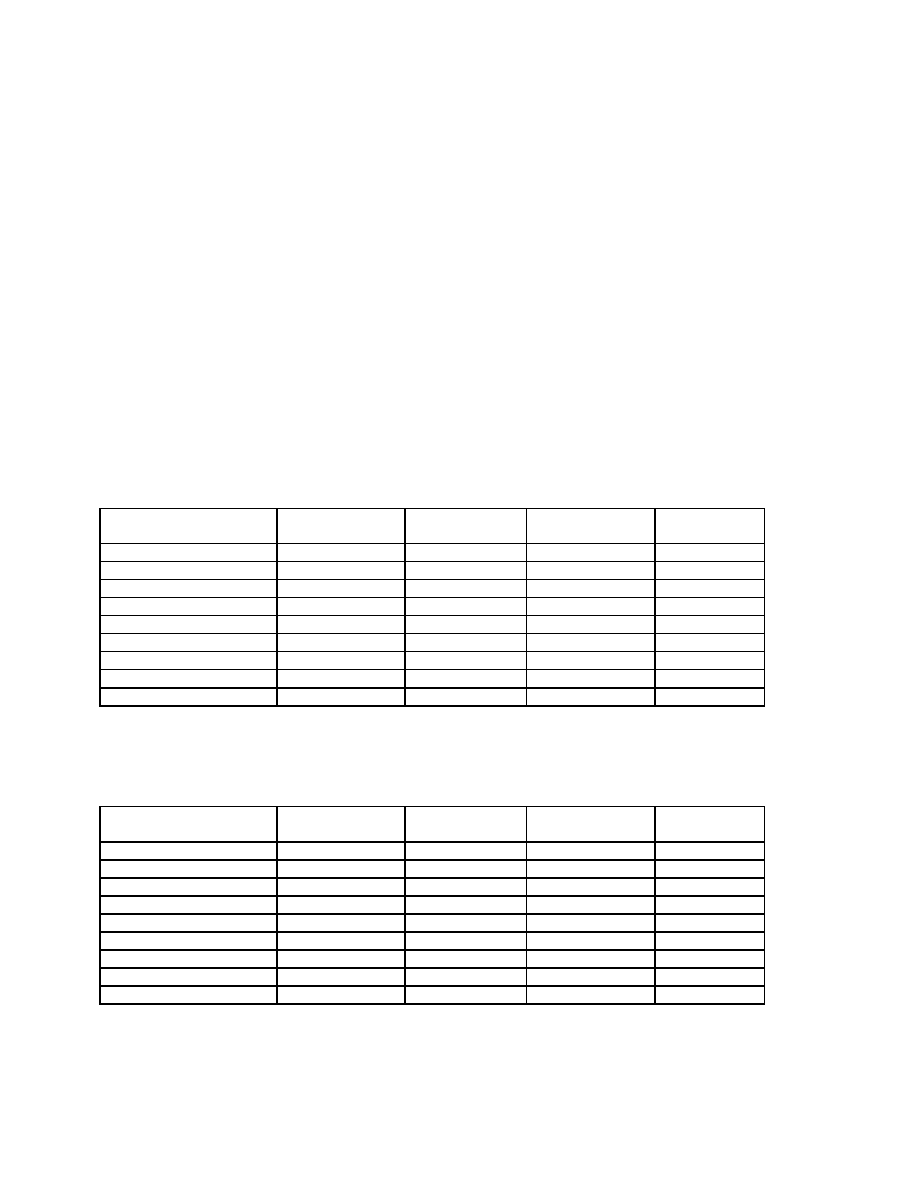

11
III. EFFECT OF FRICTION ON FUEL
EFFICIENCY
Friction and wear create a major cost to the U.S. economy. It is generally believed
1,2
that proper
attention to friction and wear could save each developed country between 1.3 and 1.6% of its
gross national product. For the U.S., this amounts to as much as $120 billion per year.
gross national product. For the U.S., this amounts to as much as $120 billion per year.
In the transportation sector, friction causes a significant decrease in the fuel efficiency of
automobiles, trucks, buses, locomotives, and other vehicles. In a typical automobile, almost 25%
of fuel energy is dissipated in frictional losses of one form or another.
automobiles, trucks, buses, locomotives, and other vehicles. In a typical automobile, almost 25%
of fuel energy is dissipated in frictional losses of one form or another.
3
As is shown in Tables 3
and 4, land-based vehicles in 1995 consumed gasoline and diesel fuel equivalent to 3.36 billion
barrels (or almost 20 quadrillion Btu) of crude oil,
barrels (or almost 20 quadrillion Btu) of crude oil,
4
of which it has been estimated that 650
5
to
830
3
million barrels were lost to friction. At the current price of about $18 per barrel, that
amounts to $12 to $15 billion per year.
Table 3. Total Annual Fuel Consumption (
Data for 1995
4,5
)
Diesel Fuel,
Million bbl/year
Gasoline,
Million bbl/year
Total Fuel,
Million bbl/year
Total Fuel,
Quads
Heavy-Duty Trucks
574
100
674
3.91
Buses
29
7
36
0.21
Off-Highway
98
26
124
0.72
Rail
86
0
86
0.50
Total Heavy Duty (HD)
788
133
921
5.34
Light Trucks (LT)
36
933
969
5.62
Total HD + LT
824
1065
1890
10.96
Automobiles
19
1453
1472
8.54
Total Vehicles
843
2519
3362
19.50
Table 4. Energy Lost to Friction in Vehicles (
Data for 1995
4,5
)
Diesel Fuel,
Million bbl/year
Gasoline,
Million bbl/year
Total Fuel,
Million bbl/year
Total Fuel,
Quads
Heavy-Duty Trucks
98
20
118
0.68
Buses
5
1
6
0.04
Off-Highway
17
5
22
0.13
Rail
15
0
15
0.09
Total Heavy Duty (HD)
134
27
160
0.93
Light Trucks (LT)
6
187
193
1.12
Total HD + LT
140
213
353
2.05
Automobiles
3
291
294
1.70
Total Vehicle
143
504
647
3.75
Most heavy-duty vehicles (trucks, buses, off-highway vehicles, and locomotives) are diesel-
powered. Frictional losses in those vehicles amount to the equivalent of 160 million barrels per
year. Light trucks (vans, SUVs, pickups) represent the fastest growing segment of trucks.
Currently, most operate on gasoline engines, and their contribution to frictional losses is about
powered. Frictional losses in those vehicles amount to the equivalent of 160 million barrels per
year. Light trucks (vans, SUVs, pickups) represent the fastest growing segment of trucks.
Currently, most operate on gasoline engines, and their contribution to frictional losses is about